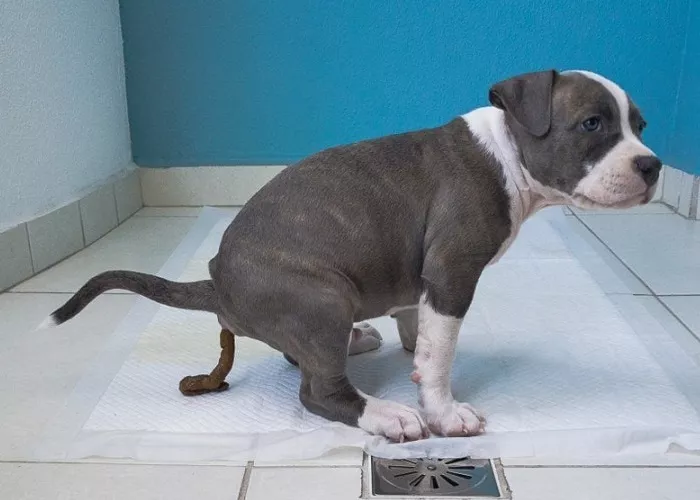A common question raised by dog owners is when to take their dog out to poop after eating. Understanding your dog’s digestive process and knowing the appropriate waiting time can help ensure a healthy routine for your furry friend. In this article, we will explore this topic in detail.
Dogs have specific digestive patterns, and knowing when to take them out to digest is important for their comfort and hygiene. Waiting the right amount of time can prevent indoor accidents and promote good bowel habits.
Understand your dog’s digestive system
Digestive process
When a dog eats, the food goes into the mouth and is chewed before passing through the esophagus and into the stomach. In the stomach, food mixes with digestive juices and begins to break down. Partially digested food passes from the stomach into the small intestine, where nutrients are further digested and absorbed. Finally, the waste enters the large intestine and eventually exits the body as feces.
Factors affecting digestion time
Size of dog: Smaller dogs generally have faster digestion times than larger breeds.
Type of food: Dry foods take longer to digest than wet or raw foods.
Age of dogs: Digestibility may differ between young and elderly dogs.
Activity level: Active dogs may digest food faster than inactive dogs.
General guidelines on waiting times
Adult dog
On average, it is recommended to wait 30 minutes to an hour or so after a meal before taking an adult dog out to poop. This gives enough time for the food to pass through the stomach and begin the digestion process in the small intestine. However, some dogs may be ready to eliminate sooner or later depending on their own digestive patterns.
puppy
Puppies have a faster metabolism and a faster digestion process. As a general rule, wait 15 to 20 minutes after your dog has eaten before taking them out to poop. Puppies may need to travel outside more frequently because they are still learning to control their bowel movements.
Senior dog
Older dogs’ digestive systems may slow down with age. Take the old dog out 45 minutes to an hour and a half after eating. Monitor your elderly dog’s stool closely, as they may be more prone to constipation or other digestive problems. Signs that your dog is preparing to poop.
Behavioral change
Your dog may start to become agitated, walking around or sniffing the ground. They may also circle or scratch on the door to indicate that they need to get out. Some dogs may whine or bark to let you know they need to be eliminated.
Physical sign
You may notice your dog’s abdomen tightening or hear their digestive tract making a gurgling sound. Their tail may be in a different position than usual, or they may crouch down slightly as if preparing to poop.
The importance of consistency
Establish a routine
Create a regular feeding schedule for your dog and stick to it as much as possible. Taking your dog out to poop at the same time every day can help them establish a routine that makes it easier for them to control their bowel movements. Time consistency also helps prevent indoor accidents.
Form good habits
When your dog walks around outside, praise and reward them immediately. This positive reinforcement helps reinforce good bowel habits, making your dog more likely to repeat the behavior.
What if your dog doesn’t poop after waiting
Be patient
Sometimes your dog may take longer than expected to defecate. Don’t rush them or rush them.
Give your dog some time to relax and sniff outside. It may take them a few more minutes to find the right spot.
Check for health issues
If your dog always doesn’t poop after eating, or shows signs of constipation, this could be a sign of an underlying health problem.
Consult your veterinarian. They may recommend diet changes, more exercise, or other measures to address the problem.
Adjust waiting time
If your dog takes longer than usual to poop after eating, you may need to adjust the waiting time slightly.
Observe your dog’s behavior and bowel movements over a few days and make adjustments as needed.
Special note
A dog with digestive problems
Dogs with sensitive stomachs, food allergies, or other digestive problems may have different patterns of excretion. Consult your veterinarian to determine the best way to bring your dog to poop after eating. They may suggest a specific diet or feeding schedule to help manage your dog’s digestive problems.
Dogs receiving medical treatment
Some medications can affect your dog’s digestion and bowel movements. If your dog is taking medication, ask your veterinarian about any potential changes in clearance patterns and the appropriate wait time after eating.
Changes in environment or daily life
Changes in the environment, such as a new home, travel, or a change in routine, can affect your dog’s bowel habits. Give your dog time to adjust to these changes and be patient as they establish their new routine. If necessary, ask your veterinarian for advice on how to manage your dog’s digestion during these transitional periods.
conclusion
Knowing how long to wait before taking your dog out to poop after eating is an important part of being a responsible dog owner. By understanding your dog’s digestive system, following general guidelines, and observing their behavior, you can help ensure a healthy daily routine and prevent indoor accidents from occurring. Persistence, patience, and attention to your dog’s individual needs are key to establishing good bowel habits. If you have any concerns about your dog’s digestive or excretion patterns, don’t hesitate to ask your veterinarian for professional advice.
Related Topics:


